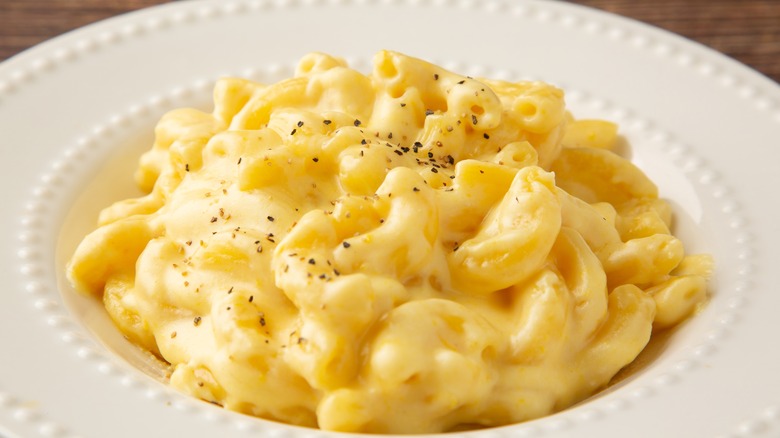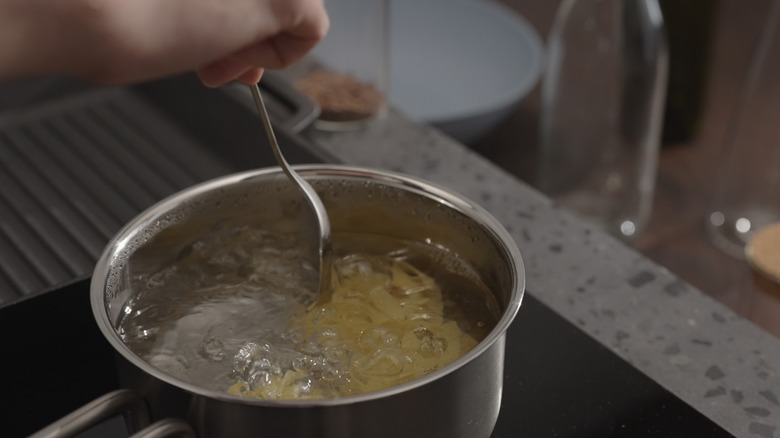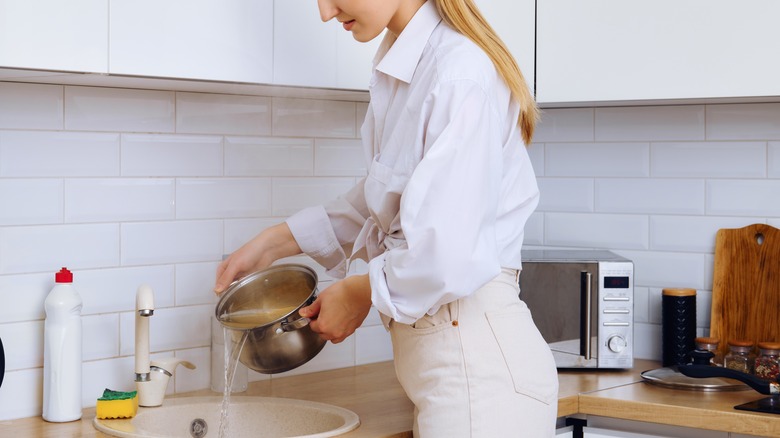The Stirring Mistake That Ruins Mac And Cheese's Texture
Mac and cheese is both a top-tier comfort food and an essential component of many holiday spreads. Combining butter, milk, cheese, and noodles until something downright decadent is created could never be a bad thing. Unless, of course, you overstir things and inadvertently turn your creamy, luscious pasta dish into a gummy, clumped-up mess.
Yes, stirring is an important part of cooking pasta evenly and sufficiently incorporating the ingredients of your mac and cheese. But it's easy to take things too far, causing excessive starch release and an unpleasantly congealed, overly stringy finished product. Since this is such a nostalgic and sentimental dish, you want to make sure your effort and energy are going to result in something cozy and delicious — the best mac and cheese possible. Once you understand the science behind stirring in this recipe, you'll have no trouble getting things perfectly cooked and evenly incorporated, without overdoing it and mucking up the whole dish.
Striking the perfect balance in stirring
When making mac and cheese, two components could be detrimentally impacted by over-stirring — and they are, unfortunately, the two named ingredients of the dish.
When noodles are added to a pot of boiling water, they begin to release their starch molecules into the water. If you don't stir them at all, the noodles will congeal together in the pot, resulting in an unevenly cooked mass of pasta. To distribute these starch molecules into the water and allow the noodles to maintain their independence, stir them as soon as they're added to the pot, and occasionally as they cook. But if you stir them too much, either when the noodles cook or when incorporating them into your cheese sauce, you'll over-agitate them, causing excessive starch release and leaving you with too-thick, clumpy mac and cheese.
As for the cheese, it becomes chemically destabilized when heated and can become stringy or grainy if handled incorrectly. Since its protein molecules fall apart as it melts, you may end up with a broken sauce — that is, separated fat that won't fully combine into the cheese sauce — or a too-stringy sauce if you try to overcompensate with too much stirring. To avoid problems, add starch to your cheese sauce to prevent the fat and protein from separating, and — rather than continuously stirring your cheese to melt — allow the heat within the pot to do the heavy lifting, then quickly stir to combine everything.
Other tips for perfect mac and cheese
The above techniques for appropriate stirring will significantly improve your mac and cheese texture, but there are additional steps you should take to ensure your finished product is as creamy as possible. Perhaps most importantly: Don't cook your macaroni to completion.
While overcooked noodles might improve some recipes, mac and cheese is not one of them. Remember that they'll continue to cook after draining – so plan accordingly. Overcooked noodles will become mushy and could turn the finished dish into an all-around gluey mess. Since mac and cheese requires cooked noodles to be either added to hot cheese sauce until combined or put in a hot oven until golden brown, cutting the time they spend in boiling water is a must.
When they've reached the appropriate level of doneness, reserve some of that starchy pasta water and drain the noodles. Next, add them to the cheese sauce and gently stir to combine. If the sauce is too thick, add a bit of your pasta water until the texture improves. Then allow your noodles to finish cooking on the stove or in the oven, serve, and enjoy!



